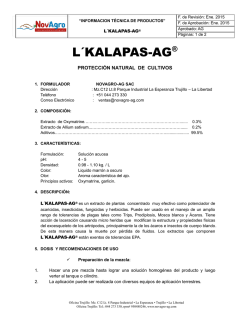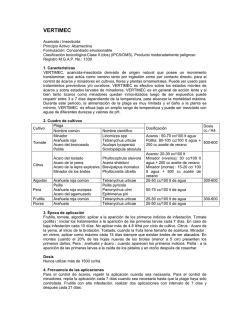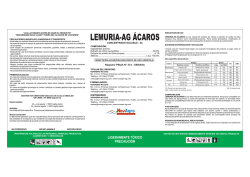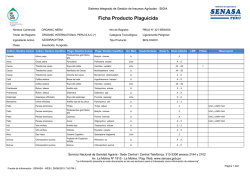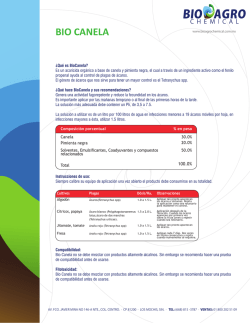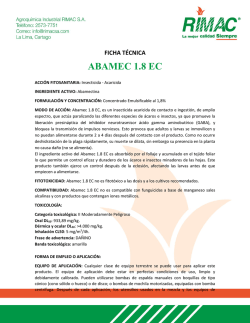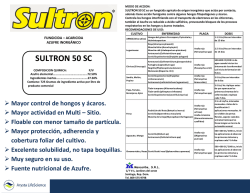
(antes Neoseiulus californicus McGregor), para el
RESUMEN La utilización del ácaro depredador Amblyseius californicus McGregor (antes Neoseiulus californicus McGregor), para el control del ácaro del rosal Tetranychus urticae Koch ha sido utilizado en algunas fincas florícolas del Ecuador pero, sin el conocimiento de parámetros culturales y económicos que incentiven su implementación. En Cotopaxi, se implementó una investigación en la variedad de rosas Freedom®, para ello se utilizó un diseño de parcelas divididas con un factorial de 2x3. Se probaron dos niveles de incidencia de la plaga y 3 estrategias de control, incluido un tratamiento químico. Se analizaron las variables: días de duración en florero, cantidad de flor nacional, días necesarios para la reinoculación, población necesaria para un control adecuado y, la relación beneficio/costo. Se encontraron diferencias significativas entre tipos de control, días de duración en florero solo en el último mes del ensayo. La población del depredador mínima necesaria se estableció en 300 000 individuos por hectárea contados en todos los estadíos. Por otra parte, no se encontraron diferencias significativas en cantidad de flor nacional, no fue necesario hacer repoblaciones del depredador y, la mejor relación beneficio/costo la obtuvo el control biológico. Se realizaron análisis foliares antes y después del ensayo sin encontrarse diferencias en la absorción de nutrientes. Palabras claves: -OPTIMIZACIÓN - Amblyseius californicus McGregor (Neoseiulus californicus) - Tetranychus urticae Koch - RELACIÓN BENEFICIO/COSTO - TRATAMIENTOS QUÍMICOS ABSTRACT The use of the predator Neoseiulus californicus McGregor (called before, Amblyseius californicus), to control the mite Tetranychus urticae Koch in roses, has been used in some floriculture farms in Ecuador but without the knowledge of cultural and economic parameters that can encourage their implementation. In Cotopaxi, an investigation was implemented in the variety of roses Freedom®, for that, a split plot design with 2x3 factorial was used. Two levels of plague incidence and 3 control strategies, including chemical treatment were tested. The variables analyzed were: days in vase, number of national flower, days required to re-inoculation, population required for adequating control and cost/benefit ratio. Significant differences were found between types of control and days in vase just in the last month of the trial. The minimum required predator population per hectare is 300 000 individuals, considering all stages. On the other hand, there were not significant differences in the number of national flower, it was not necessary to make new releases of the predator and the best cost / benefit ratio was obtained by biological control. In addition, foliar analyzes were performed before and after the test without finding differences in the absorption of nutrients. Keywords: - OPTIMIZATION - Amblyseius californicus McGregor (Neoseiulus californicus) - Tetranychus urticae Koch - COST-BENEFIT RATIO - CHEMICAL TREATMENTS
© Copyright 2025
